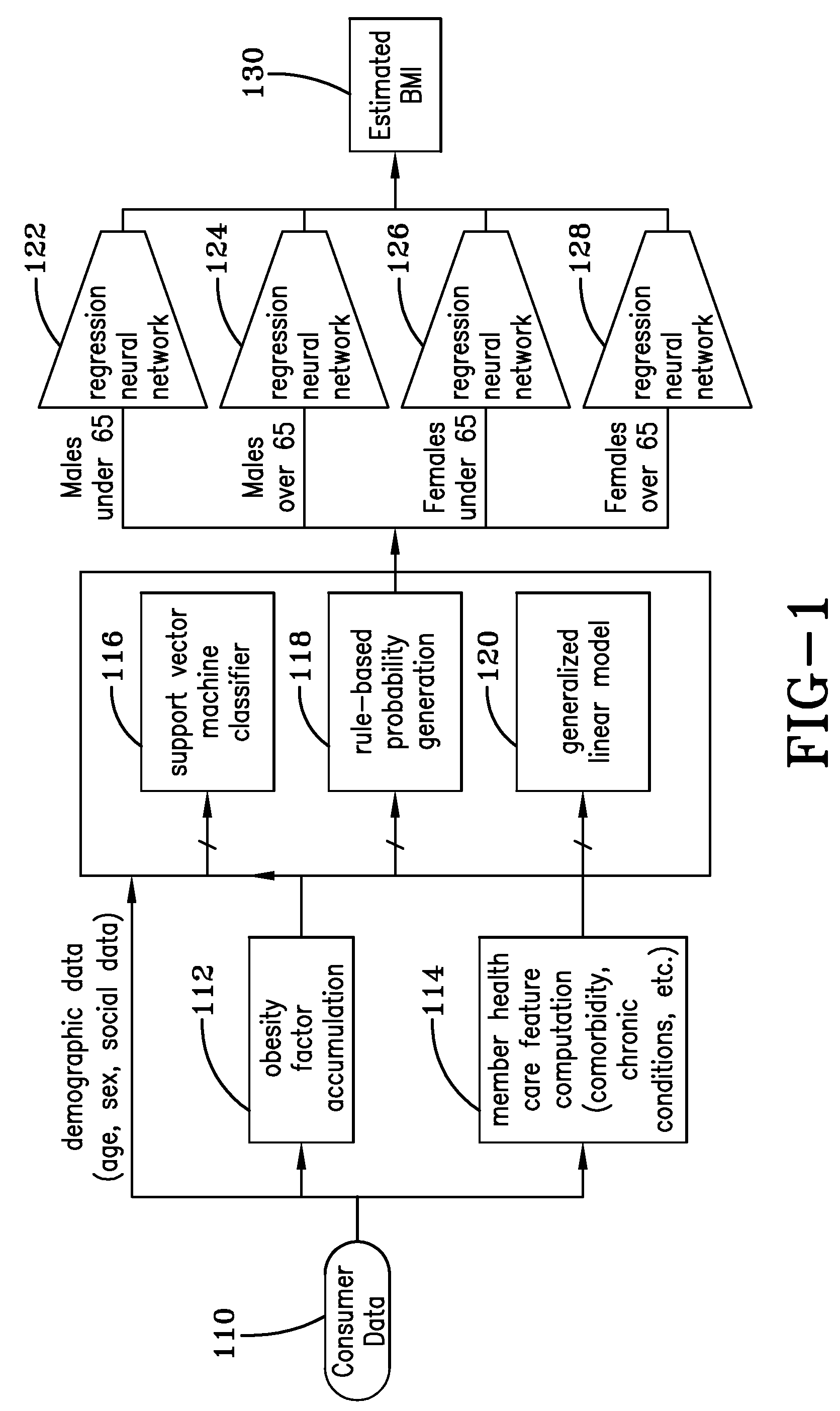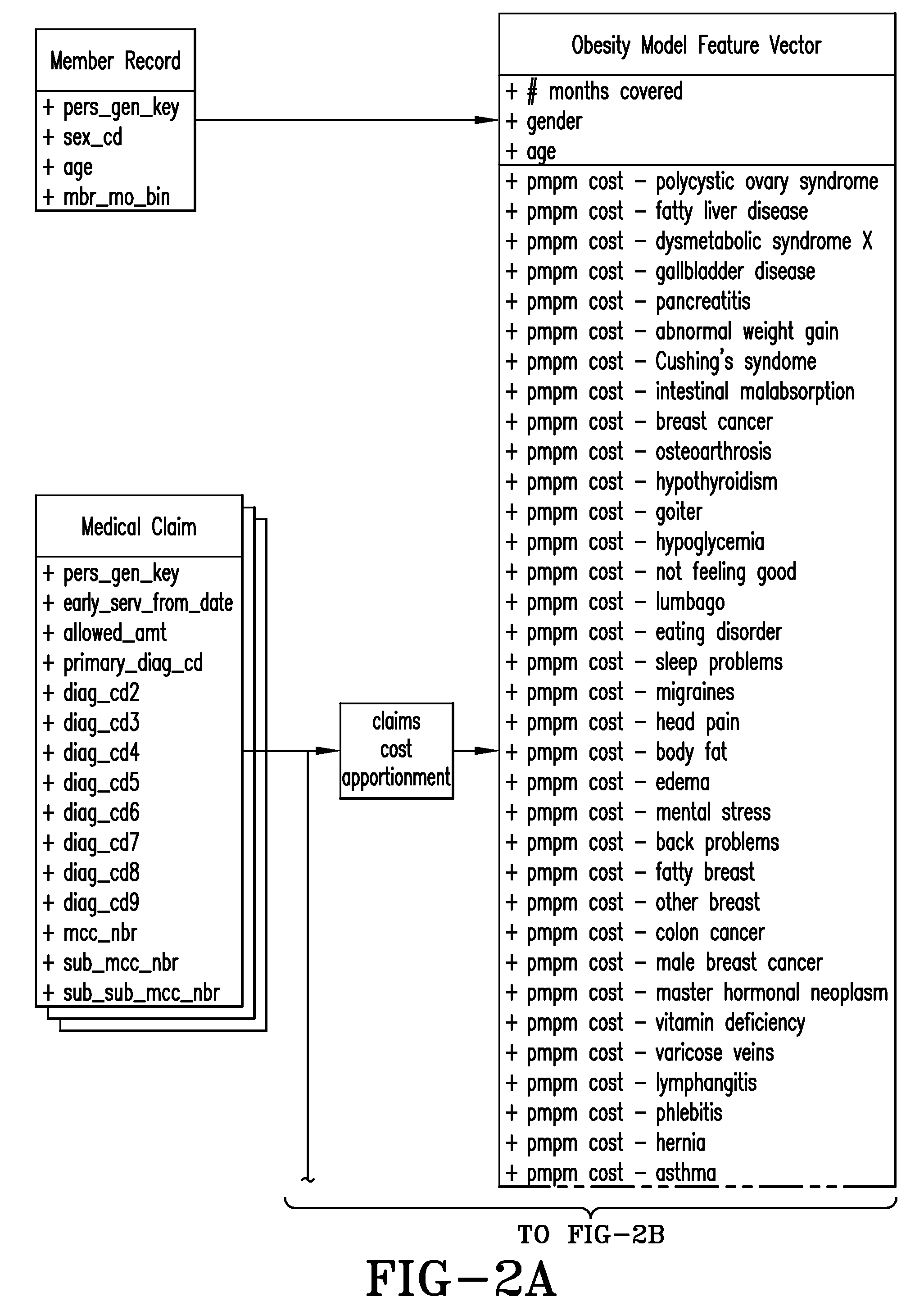Computerized system and method for estimating levels of obesity in an insured population
a computerized system and obesity technology, applied in the field of computerized health modeling systems, can solve the problems of increasing the cost of health care for individuals, not necessarily a straightforward task, and difficulty in determining the level or degree of obesity among individuals
- Summary
- Abstract
- Description
- Claims
- Application Information
AI Technical Summary
Benefits of technology
Problems solved by technology
Method used
Image
Examples
Embodiment Construction
[0011]The computerized system and method of the present invention may be used to determine whether a particular consumer is obese, based on his or her health and claims history and basic demographic data. Obesity is measured by the Body Mass Index (BMI) for an individual. BMI is calculated as the weight in kilograms divided by the square of the height in meters:
[0012]BMI=weight(inkg)[height(inm)]2(1)
[0013]BMI readings are categorized into several levels, though the threshold values are not universally consistent.1 BMI of 30 or over is generally considered obese, while many people consider a BMI of 38 (or 40 in many cases) or over as more serious—“morbidly obese.”2 A growing consensus comprehends three levels of obesity:
[0014]Obese I: BMI of 30 and over, up to 35;
[0015]Obese II: BMI of 35 and over, up to 40; and
[0016]Obese III: BMI of 40 and over
[0017]This convention was adopted for the purposes of the model described herein.
[0018]Data Preprocessing
[0019]In an example emb...
PUM
 Login to View More
Login to View More Abstract
Description
Claims
Application Information
 Login to View More
Login to View More - R&D
- Intellectual Property
- Life Sciences
- Materials
- Tech Scout
- Unparalleled Data Quality
- Higher Quality Content
- 60% Fewer Hallucinations
Browse by: Latest US Patents, China's latest patents, Technical Efficacy Thesaurus, Application Domain, Technology Topic, Popular Technical Reports.
© 2025 PatSnap. All rights reserved.Legal|Privacy policy|Modern Slavery Act Transparency Statement|Sitemap|About US| Contact US: help@patsnap.com



